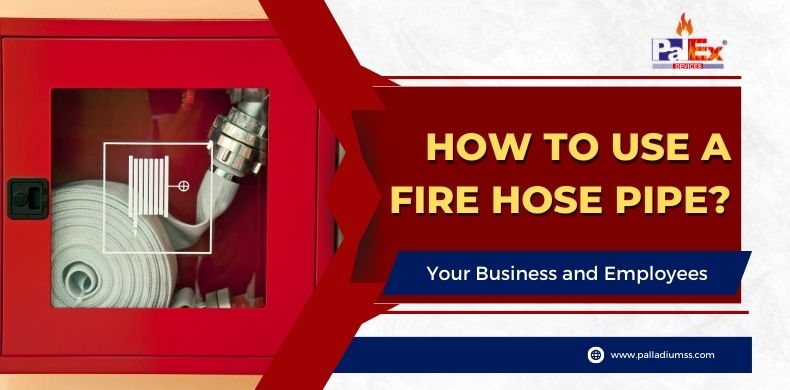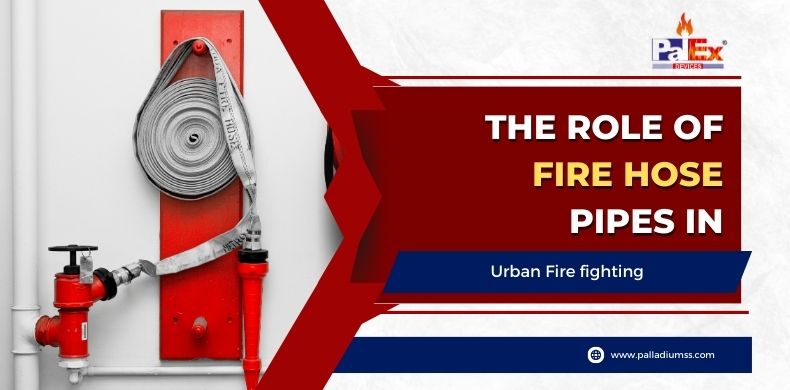Fire hose pipes area necessary gear for firefighters and individuals responsible for fire safety in various settings, such as industrial facilities, commercial buildings, and even residential properties. Knowing how to properly use a fire hose pipe can make a significant difference in effectively controlling and extinguishing fires. In this blog post, we will provide a comprehensive guide on how to use fire hose pipes, covering the different types of hoses, their components, and the steps involved in operating them effectively.
Types of Fire Hose Pipes
There are two main types of fire hose pipes: lay-flat hoses and hard suction hoses.
- Lay-Flat Hoses: These hoses are the most common type used by firefighters. They are made of flexible materials, such as synthetic rubber or polyester, and are designed to be stored flat. Lay-flat hoses are lightweight, easy to handle, and can be quickly deployed during an emergency.
- Hard Suction Hoses: Hard suction hoses are reinforced with spiraled metal wire, making them more rigid than lay-flat hoses. They are primarily used to draw water from static sources, such as lakes, pools, or water tanks, and are connected to the pumping apparatus of a fire engine.
Components of a Fire Hose Pipe
A fire hose pipe consists of several key components:
- Hose: The main body of the fire hose pipe, which carries water from the source to the nozzle.
- Couplings: The metal connectors at each end of the hose, which allow multiple hoses to be joined together or connected to a water source or nozzle.
- Nozzle: The device attached to the end of the hose that controls the flow and pattern of the water being discharged.
- Hose Reel: A device used to store and deploy the fire hose pipe, making it easier to transport and handle.
Steps for Using a Fire Hose Pipe
- Assess the Situation: Before using a fire hose pipe, evaluate the type and extent of the fire, as well as the available water sources and personnel.
- Select the Appropriate Hose: Choose the right type of hose based on the nature of the fire and the water source. Lay-flat hoses are suitable for most situations, while hard suction hoses are used when drawing water from static sources.
- Connect the Hose: Connect one end of the hose to the water source, such as a fire hydrant or fire engine, using the appropriate couplings. Ensure that the connection is secure and leak-free.
- Deploy the Hose: Unroll the hose towards the fire, ensuring that it is free from kinks and obstacles. If multiple hoses are needed, connect them using the couplings.
- Attach the Nozzle: Connect the nozzle to the end of the hose closest to the fire. Select the appropriate nozzle pattern and flow rate based on the type of fire and the desired level of control.
- Turn on the Water Supply: Once the hose and nozzle are in place, turn on the water supply at the source. Ensure that the water is flowing freely through the hose and that there are no leaks.
- Approach the Fire: Advance towards the fire while maintaining a safe distance. Use the nozzle to direct the water at the base of the flames, moving the stream in a sweeping motion to cover the entire affected area.
- Adjust the Water Flow: Depending on the progress of the fire suppression, adjust the water flow and nozzle pattern as needed. Communicate with other team members to coordinate your efforts and ensure the most effective fire control.
- Shut Off the Water Supply: Once the fire is successfully extinguished, shut off the water supply at the source. Disconnect the hose and nozzle, and begin the process of cleaning and storing the equipment.
Also Read : The Role of Fire Hose Pipes in Urban Firefighting
Maintenance and Storage
To ensure the longevity and reliability of fire hose pipes, proper maintenance and storage practices are essential. After each use, hoses should be thoroughly cleaned, dried, and inspected for any signs of damage or wear.
Any necessary repairs or replacements should be made promptly. Hoses should be stored in a cool, dry place, away from direct sunlight and extreme temperatures. Lay-flat hoses should be rolled and stored on hose reels, while hard suction hoses should be stored in a manner that prevents kinking or damage.
Safety Considerations
When using fire hose pipes, always prioritize personal safety and the safety of others. Wear appropriate personal protective equipment (PPE), such as fire-resistant clothing, gloves, and eye protection.
Never operate a fire hose pipe alone; always work in teams and maintain communication with other firefighters or team members. Be aware of your surroundings, including potential hazards, such as electrical equipment, flammable materials, and structural instability. Always follow proper procedures and guidelines as established by your organization or local fire department.
Conclusion
Knowing how to properly use a fire hose pipe is a critical skill for anyone involved in fire safety and suppression. By understanding the types of hoses, their components, and the steps involved in operating them effectively, you can be better prepared to handle fire emergencies. Remember to prioritize safety, maintain and store equipment properly, and always work in coordination with others.


